Fourteen weeks ago Kentucky’s Department of Public Health switched from daily Covid-19 updates to weekly reports, including to the CDC. Additional changes were made as to what categories of cases and tests would be reportable. These changes were made in early March, 2022 when the Commonwealth was largely recovered from the Omicron wave that peaked in late January but had not yet descended below the levels of cases, hospitalizations, or deaths occurring in the interval between the Delta and Omicron variants in early November. These three weekly metrics continued to fall until early last April when it has become clear that Coronavirus infections in Kentucky were on the rise again, indeed, in an exponential fashion.
Spring Surge of 2022:
Beginning in early to mid-April, the Test Positivity Rate (TPR) and Overall Incidence Rate per 100K Population (OIR) began to rise progressively thus enabling the subsequent surge of new cases beginning in early May that has continued through the last report of June 6th. Last week’s TPR is higher than that of the previous 13 weeks, as is the OIR. The weekly new case count is higher than any of the previous 12 weeks. Since the nadirs of these three metrics of disease activity, all three have been doubling exponentially every three weeks.
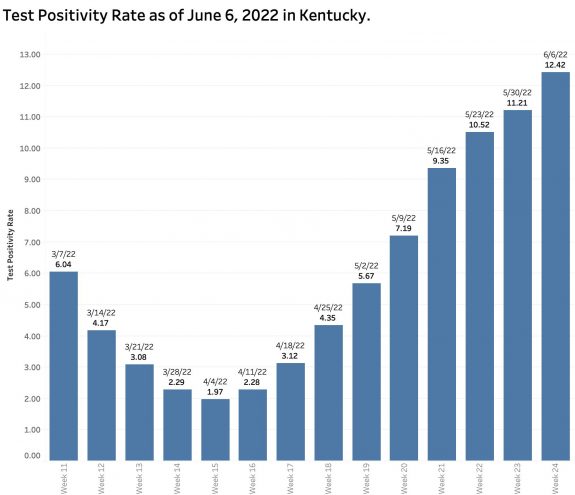
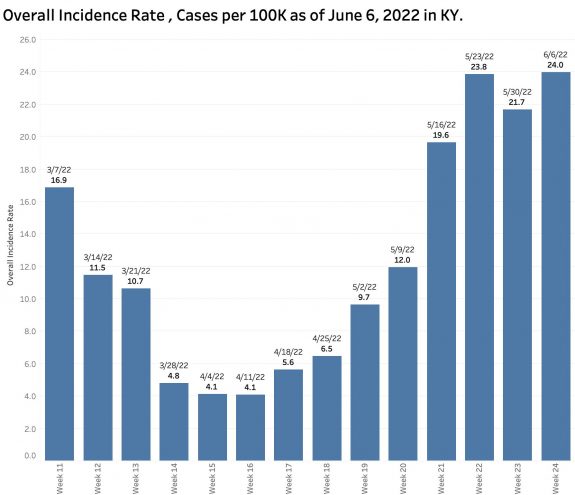
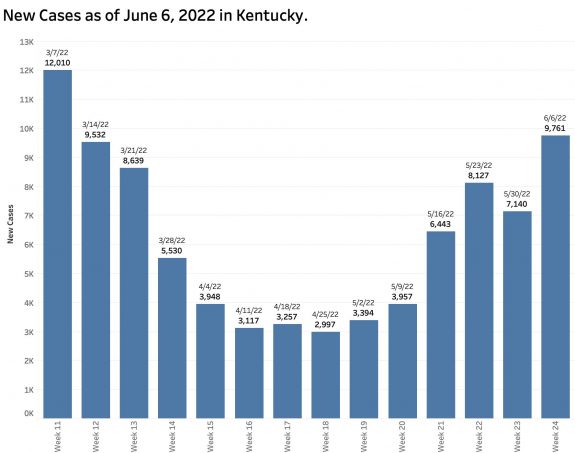
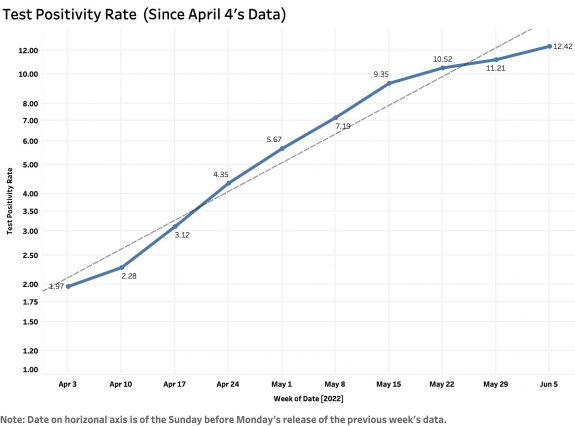
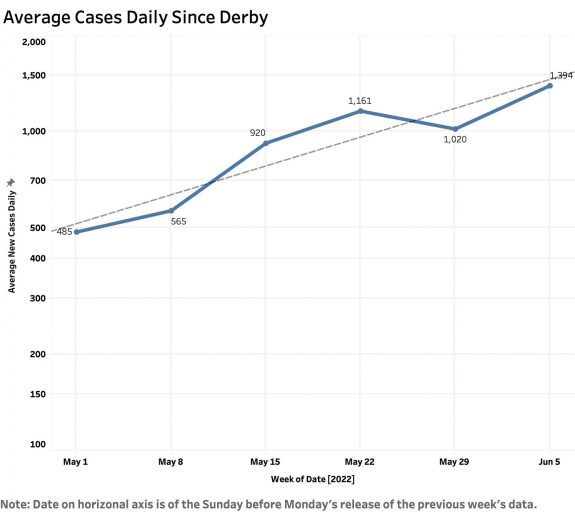
Hospitals & Deaths.
It should be noted that in recent weeks, “probable cases” of Covid-19 are no longer being reported by hospitals which would result in lower case numbers. Despite this, current hospital census for Covid-19 was higher last week than all but one of the previous 10 weeks. ICU and ventilator rates remain relatively lower, but both these indicators of more severe disease are higher than any of the previous 8 weeks. Deaths fell more slowly than cases since March but we must assume some lag in reporting is possible if not likely.
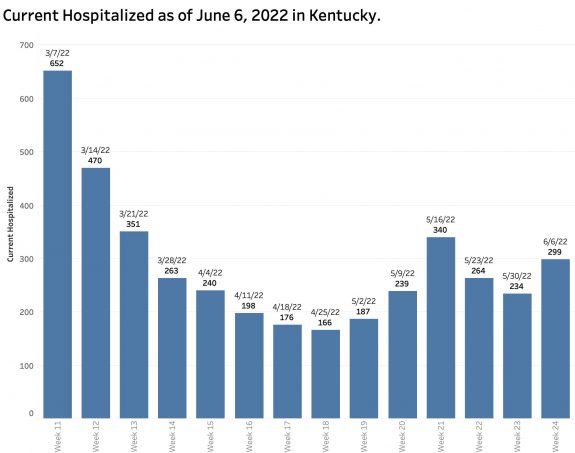
About the Maps!
In my opinion, the discrepancy between the CDC’s Community Level Map (6/3/22) and Kentucky’s own Current Incidence Map (6-6-22) only continues to grow. To my count, 92 (77%) Kentucky counties in the CDC’s community level map are in the green “low” community level. Another 21 counties are rated “medium” and 7 are in the “high” red category. Kentucky’s incidence rate map reverses these proportions with 79% in the “substantial” and “high” categories for average daily cases per 100k population. Only 2 counties are in the green “low” category with another 23 “moderate” yellow.
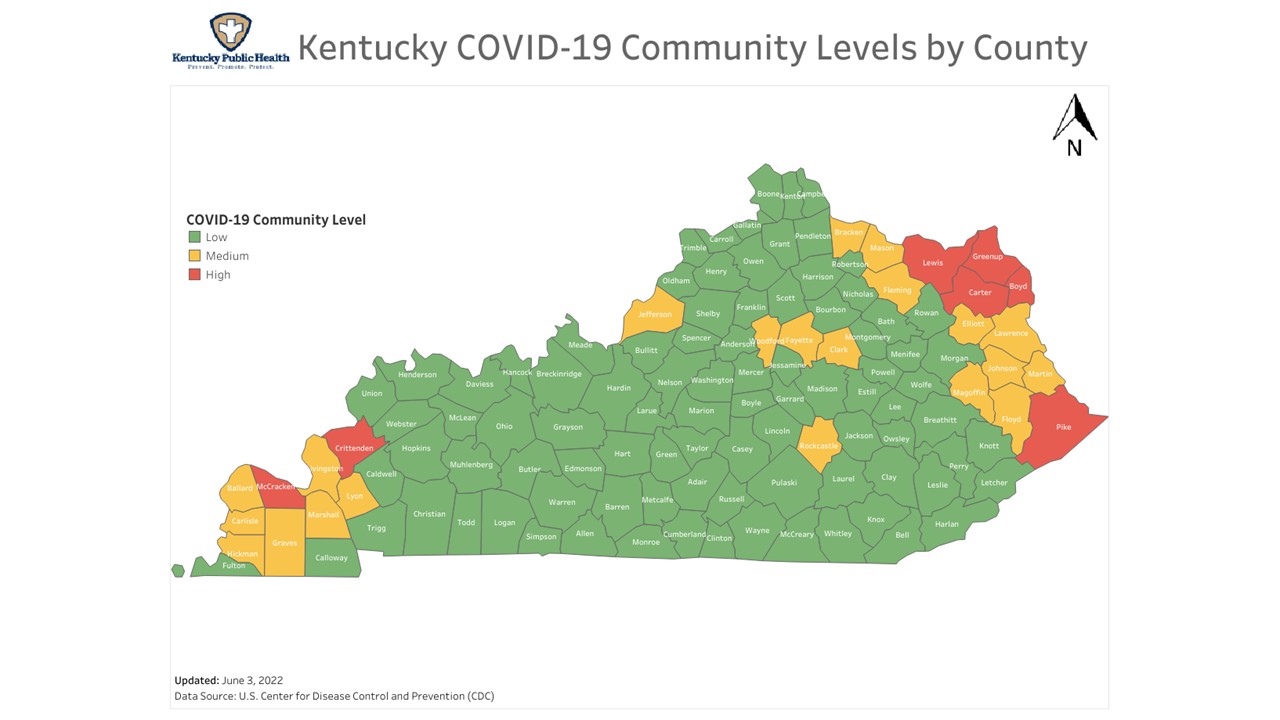
Other Observations:
Since early April, the number of PCR viral RNA tests reported has actually increased from 40,000 to just below 50,000. In fact, PCR tests currently appear to be the major source of reported cases identified In the past few weeks, as many as 78% of new cases can be attributed to PCR testing. As recently as mid-March, only some 20% of new cases were identified in this way! Changes in definitions and reporting protocols probably contribute to the increasing case-finding yields from PCR testing, but the difference is most compatible with the general assumption that most testing today uses antigen test methodology both at home or in offices and is not reported to public health departments at all. Kentucky’s actual new case numbers are almost certainly several multiples of what is being reported.
School is out for summer!
The number of new cases identified as being 18 years old or less exceeded 25% in March. It has fallen progressively to a current 12%. There are any number of reasons for this decrease including the methods of testing used, but this metric has risen and fallen in parallel with the elementary and school years. If the past is any indicator of the future, transmission in school will continue to be an important vector.
Can we make it go away?
I can only conclude that Covid-19 in its various son and daughter configurations is alive (if viruses can be said to be so) and well in the Commonwealth. Even the under-reported cases we know about are growing at rates that can be called exponential. I believe that as individuals and as a community we have the ability to mitigate the physical and civic havoc this virus is causing. I wish I could be as certain that we will have the will, but this plague is not one that we can wish away.
Peter Hasselbacher, MD
Emeritus Professor of Medicine, UofL
8 June 2022
